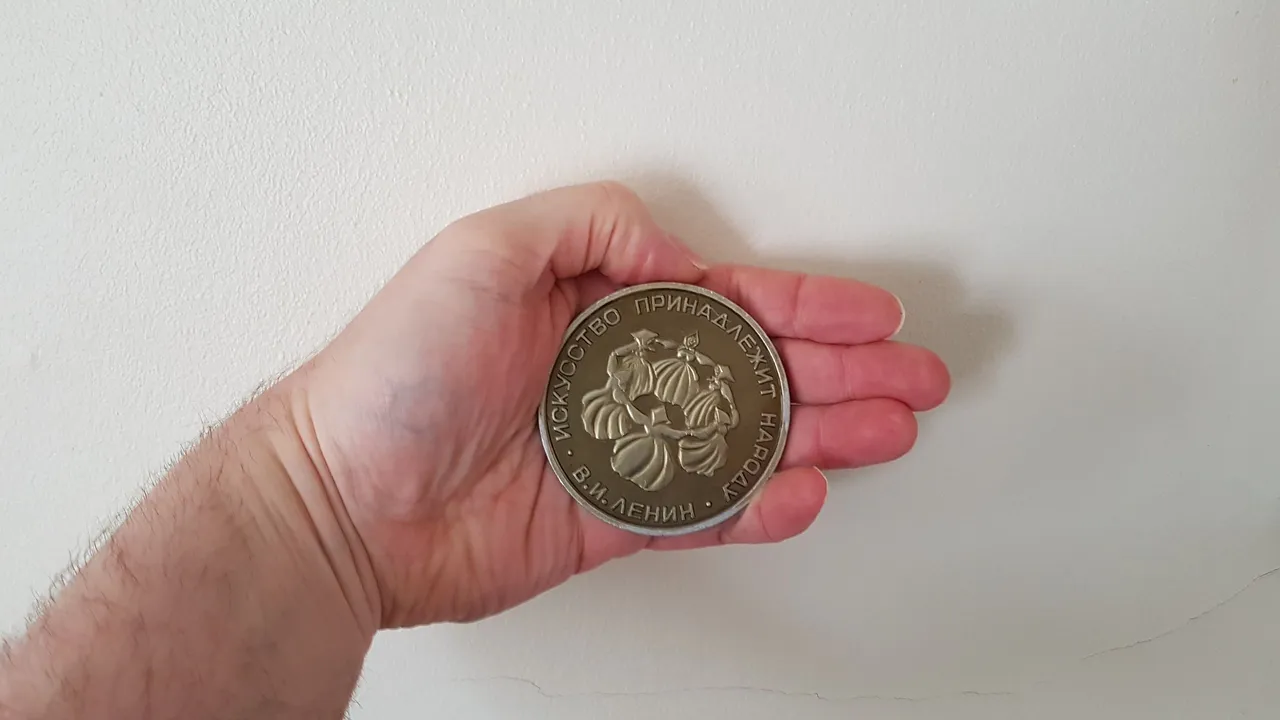 Picture of a keepsake I bought in Warsaw back in 2015
Picture of a keepsake I bought in Warsaw back in 2015
the memory of her breath
banishes all cold.


Keepsakes are a repository for memories which provide a wealth of material for the poet or novelist. All writer's should be concerned with preserving memory as much as they can, which is why photography melds so well into the writer's process as I discussed in yesterday's post. However, pictures inspire a visual memory cue, for a more visceral feeling of a past event it is great to have something solid from that time.
The coin in the title picture of this post is a good example of a keepsake that inspires sensory memories for me, far more than any picture ever could. The coin is a piece of tat, a souvenir I bought on a valentine's weekend trip to Warsaw in Poland with my ex girlfriend.
When I rub that coin in my hand I remember it in my pocket back then, hands clasped together with hers or deep in my pockets to ward off the cold. I remember the -4 degree Celsius icy weather, that slow walking style needed to stop yourself slipping, the icy wind at the top of Palace of Culture and Science, so cold that it seemed to burn our faces. Standing with our hand's in each other's back pockets kissing, the heat from our breath warming each other. The smell of her perfume, musky with a hint of jasmine and the smell of her shampoo. I remember how good it felt the last few days we were there when the weather broke to -2 degrees 😂 The brilliance of sun in my eyes, the low resonant hum of worship in the Holy Cross Church and the Pałac Staszica reflected through the soapy membrane of a bubble artist's latest creation, drifting in the frozen morning air, suspended in a moment like a memory, only to pop in an instant.
“Our memory is a more perfect world than the universe: it gives back life to those who no longer exist.”
― Guy de Maupassant
19th-century French author and master of the short story form Guy de Maupassant expresses how powerful memory is so perfectly in the quote above. For the writer, memory becomes their meat and two veg, the staple by which they nourish imagination. This is why preserving the immediacy of memories is such an important practice, it feeds the soul with the bitter sweet seeds that grow into pathos.
The memory I describe above is both sad and joyous. It describes moments in time that part of me would have happily lived forever, romance and love that enrich my journey through life. Bitter in its passing, but sweet in the recalling. The rich tapestry of this memory would be less so if I only had pictures to take me on that journey back in time. The sensory memories were triggered in handling that souvenir coin, and it is from them that the visual recollections flowed. It was also the keepsake that elicited a strong emotional reaction in me as I was writing.
As a writer the triumvirate of visual, sensory and emotional in a memory is the gold at the end of the rainbow, the perfect scene that can be modified to describe two characters visiting Warsaw in a fictional creation. Without all three elements the scene would ring out as hollow to the reader.
I have decided to challenge myself for a month to post a daily Haiku on Hive. Each week will have a different theme based on a picture prompt.
This week's broad theme is Inspiration.
To read more about the aesthetics of true haiku, and the difference between haiku and senryu, please check out my post: Haiku Vs Senryu - The Aesthetics of Form
All images in this post are creative commons sources, linked below pic. If you have enjoyed this Haiku, please check out my homepage @raj808 for similar content. Thank you.




